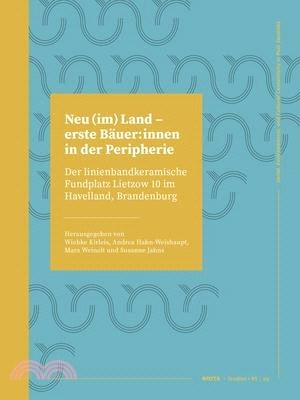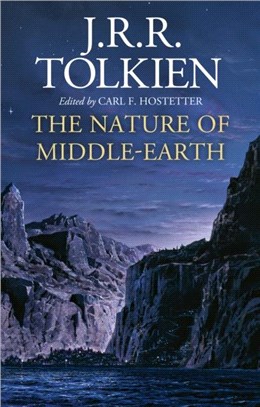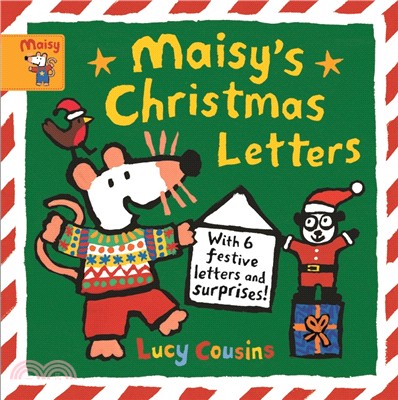Neu (Im) Land - Erste Bäuer: Innen in Der Peripherie: Der Linienbandkeramische Fundplatz Lietzow 10 Im Havelland, Brandenburg
商品資訊
ISBN13:9789464270884
出版社:Sidestone Pr
作者:Wiebke Kirleis(EDI)
出版日:2024/05/21
裝訂:平裝
定價
:NT$ 7200 元若需訂購本書,請電洽客服 02-25006600[分機130、131]。
商品簡介
相關商品
商品簡介
Bei einer Ausgrabung im havell鄚dischen Lietzow in Brandenburg wurden jungsteinzeitliche Siedlungsbefunde entdeckt. Sie geh顤en zu zwei Hofstellen der jgeren Linienbandkeramik, die um 5100-5000 v. u. Z. datiert. Die in der 酳 ersten Peripherie des damaligen b酳erlichen Siedlungsgebiets gelegene Siedlung Lietzow 10 bestand er ungef鄣r zwei Generationen. Die von dichtem Eichen-Kiefernwald umgebene Siedlung lag wie eine kleine Insel auf einer Grundmor鄚enplatte, die mit relativ fruchtbarem Boden und guter Grundwasserversorgung einen gstigen Standort f eine b酳erliche Existenz bot. Die nahen Niederungsgebiete waren zur gleichen Zeit von mesolithischen Wildbeutergruppen bewohnt.
Die Analysen der zahlreichen Tier- und Pflanzenreste von Lietzow 10 zeigen das Bild einer voll entwickelten neolithischen Landwirtschaft mit dem Rind als wichtigstem Nutztier und Emmer als Hauptgetreide. Fischfang und wohl auch Sammelwirtschaft trugen in gr?erem Umfang zur Nahrungssicherung bei. Die Jagd spielte nur eine untergeordnete Rolle.
Trotz ihrer randlichen Lage war die Siedlung aber keinesfalls isoliert. Der Gro teil der Formen und Verzierungen des umfangreichen Keramikinventars zeigt deutlich den Einfluss aus dem mitteldeutschen Raum. Darer hinaus sind weitreichende Fernbeziehungen bis Sdeutschland nachweisbar. Auch die Steinartefakte belegen Fernkontakte. Der Gro teil der Steinger酹e verweist auf ein regionales Netzwerk, da Flint und Mahlsteinrohstoff als Vollkerne von in einiger Entfernung zur Siedlung gelegenen Abbaustellen stammen. Hingegen fehlt ein eindeutiger Beweis f einen Austausch zwischen den mesolithischen und neolithischen Gruppen im Havelland.
English abstract:
This publication presents research on the first peasants of the Linear Pottery group in Brandenburg, northern Germany. The region is of particular interest because it is situated in the absolute periphery of the Linear Pottery area. The volume combines the results on settlement features, pottery and stone tools with archaeobotanical and archaeozoological studies on the diet and economy of these Neolithic people with focus on the site of Lietzow 10. This holistic approach fulfills a research desideratum, because the state of knowledge about such enclaves of agricultural life in the midst of the settlement area of forager groups is still incomplete.
The excavation of the site Lietzow 10 yielded features from which a settlement site with two farmsteads could be reconstructed, which was inhabited for 2-3 generations. Large quantities of pottery were found, according to typology dating into the period around 5100 to 5000 BCE at the latest, i.e. to the younger LBK. Several radiocarbon dates support this chronological classification and confirm the Linear Pottery chronologies from Central Germany for Brandenburg features.
Despite its peripheral location, the settlement site was by no means isolated; the pottery finds even attest to long-distance contacts. The supply of raw material for the stone implements points to a regional network, for flint and grindstone raw material were not extracted in the vicinity of the site, but were apparently mined some distance away.
The archaeozoological and archaeobotanical investigations - for the latter, samples from other Neolithic settlements in Havelland were also available - provide insights into the economic practices and diet of the settlers. The cereals found were almost exclusively emmer, other crops were flax and pea. Animal husbandry was of outstanding importance for the food supply. Among the domestic animals, cattle probably played the greatest economic role, but pigs and small ruminants were also significant. Both, the crop and the domestic animal evidence show a fully developed agriculture. In addition, there is evidence for extensive gathering. Hunting - unlike fishing - did not play a major role in the diet, although wide range of game species is represented.
Die Analysen der zahlreichen Tier- und Pflanzenreste von Lietzow 10 zeigen das Bild einer voll entwickelten neolithischen Landwirtschaft mit dem Rind als wichtigstem Nutztier und Emmer als Hauptgetreide. Fischfang und wohl auch Sammelwirtschaft trugen in gr?erem Umfang zur Nahrungssicherung bei. Die Jagd spielte nur eine untergeordnete Rolle.
Trotz ihrer randlichen Lage war die Siedlung aber keinesfalls isoliert. Der Gro teil der Formen und Verzierungen des umfangreichen Keramikinventars zeigt deutlich den Einfluss aus dem mitteldeutschen Raum. Darer hinaus sind weitreichende Fernbeziehungen bis Sdeutschland nachweisbar. Auch die Steinartefakte belegen Fernkontakte. Der Gro teil der Steinger酹e verweist auf ein regionales Netzwerk, da Flint und Mahlsteinrohstoff als Vollkerne von in einiger Entfernung zur Siedlung gelegenen Abbaustellen stammen. Hingegen fehlt ein eindeutiger Beweis f einen Austausch zwischen den mesolithischen und neolithischen Gruppen im Havelland.
English abstract:
This publication presents research on the first peasants of the Linear Pottery group in Brandenburg, northern Germany. The region is of particular interest because it is situated in the absolute periphery of the Linear Pottery area. The volume combines the results on settlement features, pottery and stone tools with archaeobotanical and archaeozoological studies on the diet and economy of these Neolithic people with focus on the site of Lietzow 10. This holistic approach fulfills a research desideratum, because the state of knowledge about such enclaves of agricultural life in the midst of the settlement area of forager groups is still incomplete.
The excavation of the site Lietzow 10 yielded features from which a settlement site with two farmsteads could be reconstructed, which was inhabited for 2-3 generations. Large quantities of pottery were found, according to typology dating into the period around 5100 to 5000 BCE at the latest, i.e. to the younger LBK. Several radiocarbon dates support this chronological classification and confirm the Linear Pottery chronologies from Central Germany for Brandenburg features.
Despite its peripheral location, the settlement site was by no means isolated; the pottery finds even attest to long-distance contacts. The supply of raw material for the stone implements points to a regional network, for flint and grindstone raw material were not extracted in the vicinity of the site, but were apparently mined some distance away.
The archaeozoological and archaeobotanical investigations - for the latter, samples from other Neolithic settlements in Havelland were also available - provide insights into the economic practices and diet of the settlers. The cereals found were almost exclusively emmer, other crops were flax and pea. Animal husbandry was of outstanding importance for the food supply. Among the domestic animals, cattle probably played the greatest economic role, but pigs and small ruminants were also significant. Both, the crop and the domestic animal evidence show a fully developed agriculture. In addition, there is evidence for extensive gathering. Hunting - unlike fishing - did not play a major role in the diet, although wide range of game species is represented.
主題書展
更多
主題書展
更多書展今日66折
您曾經瀏覽過的商品
購物須知
外文書商品之書封,為出版社提供之樣本。實際出貨商品,以出版社所提供之現有版本為主。部份書籍,因出版社供應狀況特殊,匯率將依實際狀況做調整。
無庫存之商品,在您完成訂單程序之後,將以空運的方式為你下單調貨。為了縮短等待的時間,建議您將外文書與其他商品分開下單,以獲得最快的取貨速度,平均調貨時間為1~2個月。
為了保護您的權益,「三民網路書店」提供會員七日商品鑑賞期(收到商品為起始日)。
若要辦理退貨,請在商品鑑賞期內寄回,且商品必須是全新狀態與完整包裝(商品、附件、發票、隨貨贈品等)否則恕不接受退貨。
























